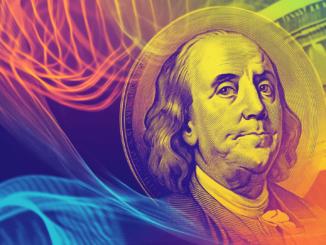
One of America’s Largest Banks Moves to Blockchain
U.S. Bank, a top-five American financial institution with more than $671 billion in assets under management, has officially partnered with Stellar to test tokenization of deposits and the issuance of digital tokens directly on the blockchain.
This is one of the most significant signals yet that traditional banking infrastructure is moving beyond experimental pilots and toward real blockchain integration.
The announcement instantly placed Stellar and its native asset XLM in the spotlight as an institutional-grade network for regulated financial activity.
What the Bank Is Actually Testing
According to the announcement, U.S. Bank is experimenting with:
Tokenization of customer deposits
Issuance of digital representations of fiat funds
On-chain settlement and movement of value
Infrastructure for faster, programmable finance
Instead of relying solely on internal ledgers, the bank is using Stellar’s network to represent and potentially transfer value in a tokenized form.
This allows for real-time settlement, transparency and automation, while reporting to an auditable public blockchain.
Why Stellar Was Chosen
Stellar was built specifically for payments, tokenization and cross-border value transfer. Its architecture allows institutions to create compliant digital assets while maintaining performance, low fees and predictable settlement.
For enterprise use, Stellar offers:
Fast finality
Low transaction costs
Built-in tokenization features
Global interoperability
Existing relationships with financial institutions
By choosing Stellar, U.S. Bank is signaling confidence in its infrastructure, stability and real-world readiness.
What This Means for XLM and the Ecosystem
While the announcement focuses on infrastructure rather than speculation, it represents a strong reputational boost for Stellar and XLM.
Possible impacts include:
Increased institutional interest in Stellar
More banks exploring blockchain tokenization
Higher usage of the Stellar network
More partnerships in regulated finance
For the crypto market, this move blurs the line further between traditional finance and Web3.
Tokenization Is Becoming Inevitable
Banks across the world are now competing to modernize their systems. Tokenization is one of the most powerful tools available:
Faster settlement than legacy rails
Reduced operational costs
Programmable compliance
Global reach
Fractional and transparent assets
As more institutions experiment with tokenized deposits, this model may become the foundation of future banking.
What was once considered a “crypto use case” is now being adopted by the world’s largest financial entities.
A Glimpse of the Future Financial System
This partnership shows that the future is not crypto versus banks — it is crypto infrastructure inside banks.
U.S. Bank’s move confirms that blockchain is no longer a parallel system. It is evolving into the backend of tomorrow’s financial world, where money is digital by default and programmable by design.
In that future, networks like Stellar may serve as the rails that power everyday finance, invisible but essential.


